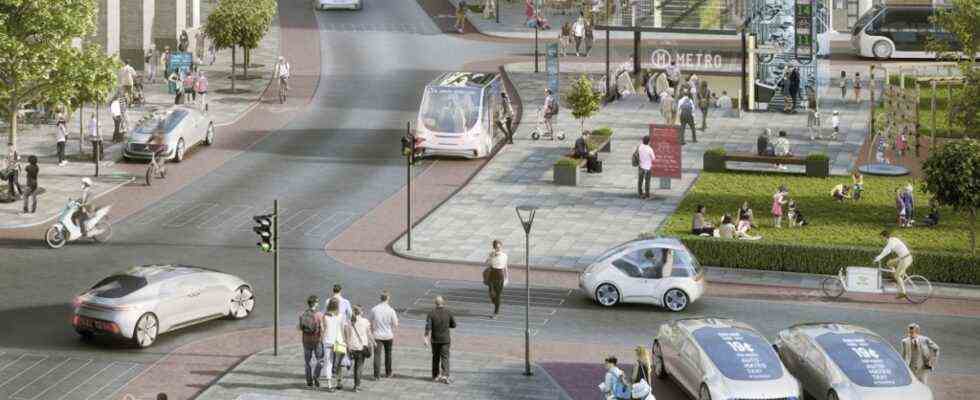For the time being, Daimler and Bosch will no longer work together on the development of robotic taxis for urban traffic. This was confirmed by both companies of the Süddeutsche Zeitung. Since 2018, the world’s largest automotive supplier and the Stuttgart-based carmaker have been developing software and hardware for driverless cars in a joint project that should be on the road in cities in a few years. But now the collaboration is about to end. There is no such thing as a series-production Robotaxi.
Daimler and Bosch have not yet given an exact date for the end of the former flagship project. The car manufacturer says that talks are currently being held to bring the development cooperation for fully automated and driverless driving in the city to a conclusion. It is a done deal, however, that they will go their separate ways on this issue. From Daimler’s side it says: After “intensive testing and by mutual agreement as best as possible”, the companies have agreed to “focus on their individual development paths in the future in the highly complex development environment of fully automated and driverless driving in an urban environment”. Bosch also confirms that talks are being held about the end of the project: “The time and further details are currently being discussed,” said a company spokeswoman.
People familiar with the project said weeks ago that the cooperation was “dead”. At Daimler, for example, employees from the Robotaxi alliance have already been docked with other teams and are working on new tasks there. Three years ago, Daimler and Bosch began their collaboration with big plans that would end with a car that would drive people through cities without a driver. They named the joint project “Athena”, named after the Greek goddess of wisdom, art and stratagem.
The Swabian merger sounded perfect: here the world-famous premium manufacturer with the star, there the largest automotive supplier in the world. In Stuttgart-Vaihingen, engineers and programmers from both companies were supposed to work together to catch up on the lead of American tech companies such as Waymo or Apple and not to allow themselves to be left behind by Elon Musk and Tesla, as is the case with e-mobility. But the German competition is also making bold announcements: VW recently announced that, together with the American software company Argo, it would have its first robotic taxis in German cities as early as 2025.
Because one thing is certain: The transformation from a pure car manufacturer to a mobility provider will only be profitable for a manufacturer if it is possible to get vehicles on the road without a driver on a large scale. However, where this technology is primarily in demand – in urban areas – it is also particularly difficult from a technical point of view.
At Bosch, we are certain that other autonomous driving functions will first go into series production
As a supplier, Bosch, who also supplies software and hardware to other car companies, the end of Athena could hurt less than the automaker Daimler. “For us this is just a transition to the next phase. We will continue to step on the gas with highly automated driving,” says Bosch managing director Harald Kröger. He admits that the challenge of developing robotic taxis for urban traffic is “bigger than many would have thought”. At Bosch, they are certain that autonomous driving functions will initially go into series production in other areas – for example in logistics or in conjunction with the equipment of parking garages, in which cars will soon be able to park on their own. In this area too, Bosch is running a pilot project with Daimler, and the technology is due to go into series production this year at Stuttgart Airport.
For the car manufacturer Daimler, it is the second project on autonomous driving that it has started with a partner from German industry, but in which the originally set goal was not achieved. The Stuttgart-based company once had big plans with BMW to jointly develop software that would at least take control in certain driving situations, while the driver could concentrate on other activities. However, it was not about highly automated driving in the city as in the Bosch project (level 4/5), but rather about level 3 systems in which the computer only occasionally controls the car on its own. But the cooperation with BMW was also surprisingly ended last year.
At least the end of this cooperation seems to have coped better with the Swabians than the Bavarian competition: In autumn of this year, a function is to be approved in Germany in the S-Class, with which the driver can take control on the autobahn up to 60 km / h can drop off the car. If the system is active, the driver no longer has to pay attention to the traffic and can, for example, answer e-mails or watch videos during this time. No other manufacturer – not even the highly acclaimed competition from Silicon Valley – has so far received approval in a production car for such an assistance system.

